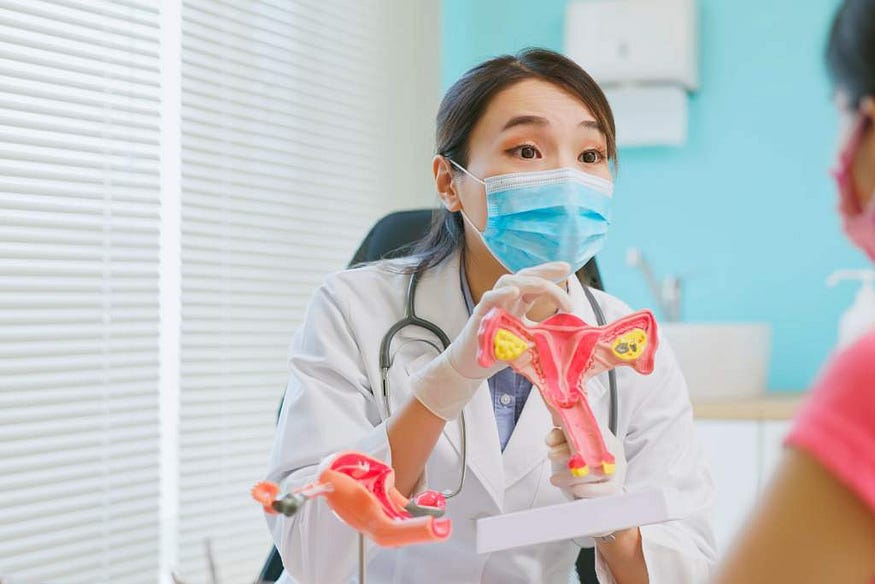Fibroid All you need to know — Cicle Health
Uterine fibroids are benign tumors that occur in the uterus. They can vary in size and can cause some mild to moderate problems. Such as pain during sex or urination, heavy periods, and difficulty getting pregnant. However, uterine fibroids are generally not dangerous and can be treated with medication and surgery.
They occur in up to 10% of women of reproductive age, and are the most common cause of heavy menstrual bleeding. Uterine fibroids are not cancerous, and there is no clear cause for their development. However, they can cause significant menstrual symptoms, including cramps, bloating, and pain during intercourse. Uterine fibroids may also cause infertility if they grow large enough.
to book an appt with our healthcare provider
What are uterine fibroids and what are their symptoms?
The symptoms will depend on the number of tumors as well as their location and size. For example,
Submucosal fibroids can cause heavy bleeding during periods and problems with pregnancy. If the fibroid tumor is very small or you are going through menopause, then there may be no symptoms. Fibroids can shrink during and after menopause. This is because menopause is progressing. During menopause, the levels of estrogen and progesterone are declining.
Symptoms of fibroids can be:
Causes of Fibroids
Doctors do not know the exact cause of uterine fibroids, but research and investigations point to these factors.
Genetic change
Many fibroids have changes in genes that are different from those of the uterine muscle cells. Women with symptomatic fibroids usually do not experience any fertility problems. Many women with fibroids go on to have healthy pregnancies.
fibroids test
Uterus fibroids are often found by chance during a doctor’s routine pelvic exam. Irregularity in size may be felt, which may suggest the presence of fibroids.
If there are symptoms of uterine fibroids, the doctor may recommend these tests:
Ultrasound:-
The doctor may ask to do an ultrasound to confirm. This test is done to confirm and measure the fibroids. The doctor or technician moves the ultrasound device (transducer) over the abdomen (transabdominal tube) or uterus, it is placed inside the vagina (transvaginal tube) to form the image of the uterus.
Blood Test:-
If you have abnormal bleeding in your periods, our doctor may do some more tests to check for possible causes. A complete blood count (CBC) may be done to determine if you need blood.
Other imaging tests
If ultrasound doesn’t provide enough information, the doctor may order other imaging tests such as:
Magnetic Resonance Imaging (MRI):-
This imaging test can get a better look at the size and location of the fibroids, which can help identify many types of tumors. MRI is often used in women with large bladders or in menopause. It is done in women approaching (perimenopause).
Sonography:-
Sonography, also called a saline infusion sonogram, to expand the uterine cavity For this, the doctor uses salt water, to get an image of fibroids.
Why choose Cicle ?
We at Cicle can help with the diagnosis and treatment of Fibroid. All you have to do is contact our health coach and an appointment with a doctor will be made. To book an appointment with a doctor,
Frequently asked questions
What if fibroids are not treated?
Uterine fibroids are usually not painful and often go away on their own. Although in some cases, if left untreated, fibroids can grow in size, number, or both, and can be life-threatening. This may interfere with overall health, leading to complications.
Are uterine fibroids and cysts the same?
Definitely not. Both conditions are completely different. Uterine fibroids are non-cancerous muscle growths, while cyst is filled with a fluid-filled substance which is formed in the ovary.
Can fibroids burst?
Fibroids can burst due to high blood pressure, pressure on the abdomen, or injury. High blood pressure or hypertension. There are serious complications from fibroids as a result of bleeding.
Do uterine fibroids smell bad?
Uterine fibroids and their treatment can cause changes in regular vaginal discharge. This may be a sign of infection.
Conclusion
Uterine fibroids caused a total of 4190 deaths worldwide in the year 2019 at an annual level. According to the statistics for the year 2019, there are a total of 226 million women living with fibroids globally. The prevalence of fibroids in India is 37.65 percent in the rural population and 24 percent in the urban population. In such a situation, without ignoring any symptoms, you should definitely tell the doctor. If you want to stay at home, at your convenience, you can book an appointment with our doctor and seek advice.
Our goal Is to provide the best medical services to our patients.
today to book an Appointment.
- Heavy bleeding, blood clots, discharge between or during two menstrual periods
- Pain in the lower back of the pelvis or back
- increased cramping during periods.
- excessive urination.
- Pain during intercourse.
- Having periods for a long time
- Feeling of pressure in the stomach or flatulence.
For More Details — URL — https://www.cicle.health/
https://www.cicle.health/blog/menstruation/fibroid-all-you-need-to-know
Email — support@sheresolved.com
Contact US — +91 7043290777


Comments
Post a Comment